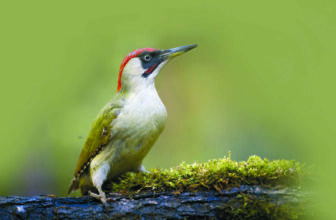
Birds are noticeably on the move this month as we head into Autumn and I’ll be on the watch out, as usual, for a few unusual species.
Numbers of some more common birds gradually build up over the next ten weeks or so and sometimes can be quite spectacular.
The sight of a flock of Wood Pigeons in Ewhurst, estimated to be 20,000 strong, must have made a remarkable memory for the finder back in early November 1969. Hopefully they weren’t flying over the observer’s head…
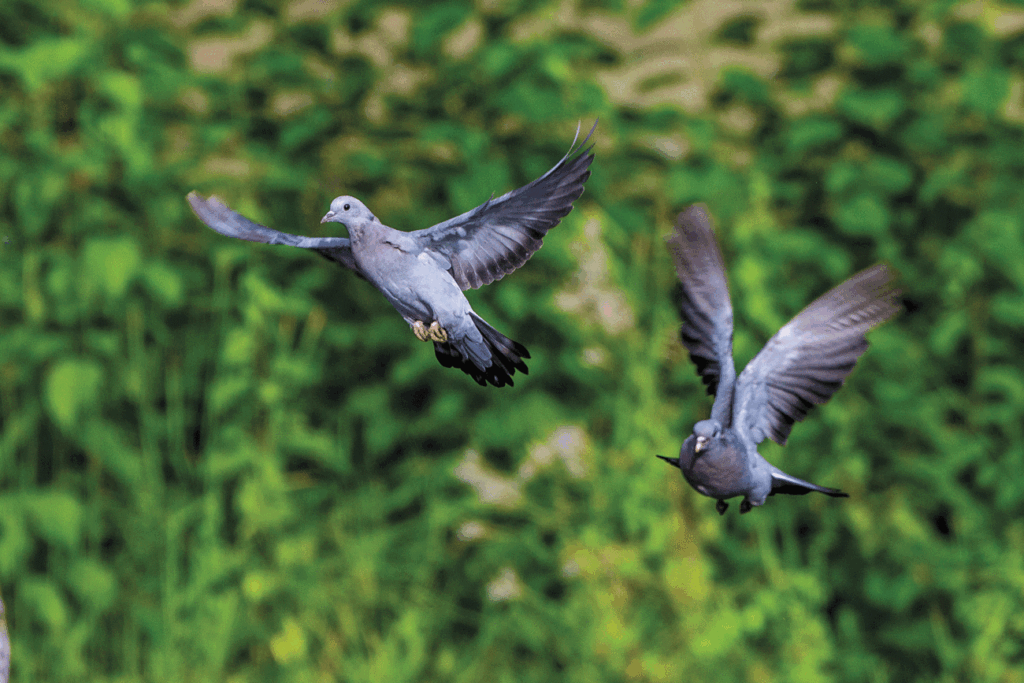
Then early last November while looking for locally elusive Ring-necked Parakeets (they are everywhere in many other parts of Surrey and London) I felt very chuffed to encounter a constant stream of Wood Pigeons moving west on the hillside slopes above Cranleigh.
There was more than one every second and in an hour of watching I counted 4,778, a personal record for the area.
But any hopes of impressing any other watchers with tales of my sightings soon evaporated. I quickly learned there was a massive movement of Wood Pigeons that day across the southeast. My mates Wes and Mark had counted a Leith Hill impressive record of 23,560! Poor old farmers.
Wood Pigeons, despite their large numbers, can be easily overlooked at times by many of us because they are an everyday sight around Cranleigh. Familiarity can however encourage a dismissive attitude – ‘they are just Wood Pigeons’ – and we may overlook something a bit special.
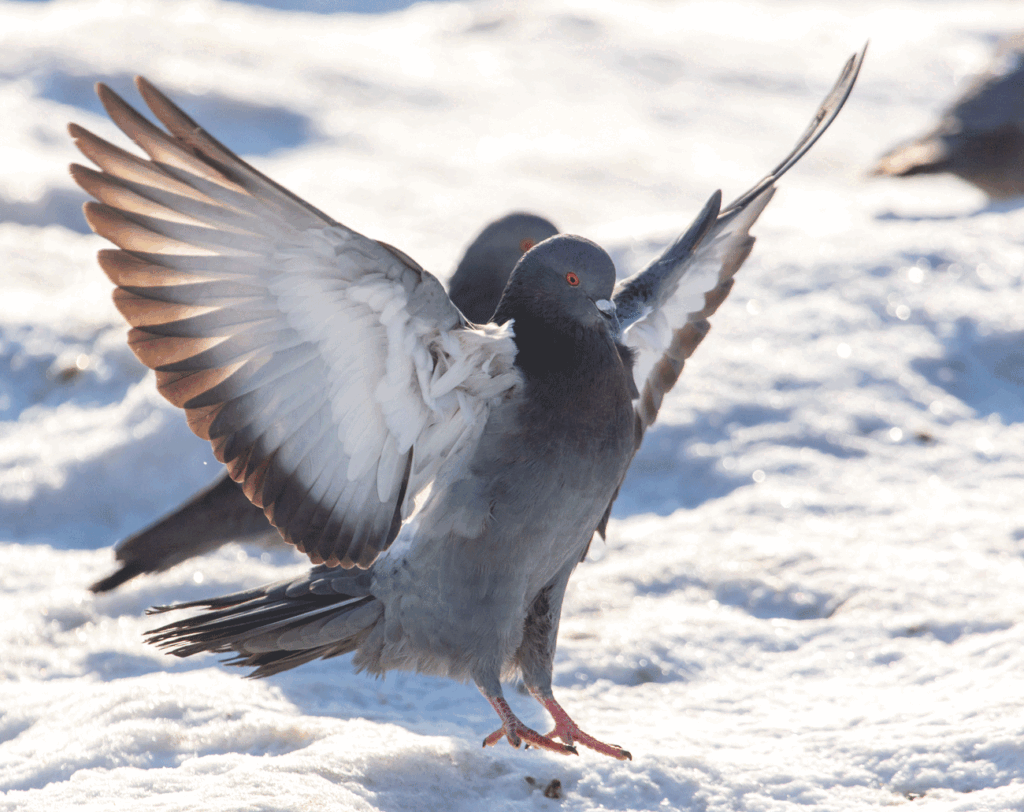
So if you think all those pigeons in the field, or flying over, are the same species then let me introduce you to one of our most ignored birds. Meet the Wood Pigeon’s smaller cousin, the shy Stock Dove.
This should not be confused with the scores of multi coloured Feral Pigeons flying around Cranleigh these days. They dice with death in the early morning picking grit from the roads unaffected by all those closures due to gas/Thames Water/broadband/potholes and completely mysterious reasons.
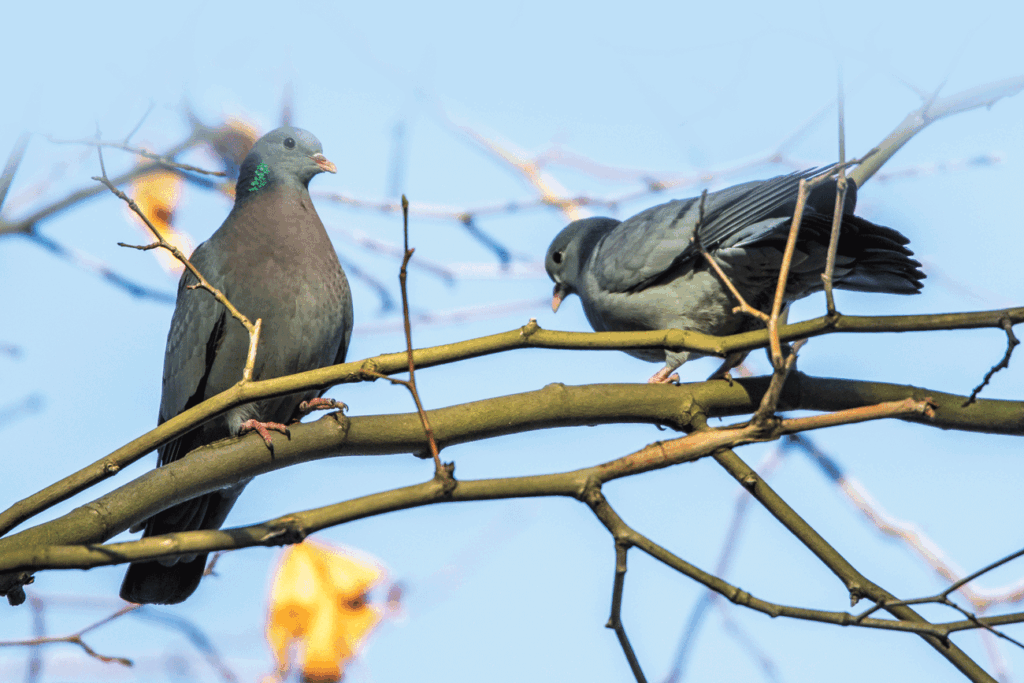
I reckon the Stock Dove is one of Britain’s most commonly unrecognised birds. This frequently hidden little treasure can be encountered with its bigger chum in our woods, fields and parks.
Generally it is not a bird likely to be seen in small gardens but they can be attracted in harsher weather to forage among the spillage from feeders.
Unlike the Wood Pigeon the more compact Stock Dove has no white on the neck and when it is gliding you will see no white in the wings. It also has dark eyes, making it appear somewhat sweeter than the gormless look of the yellow-eyed Wood Pigeon.
Most of the bird is coloured blueish/grey. Its wings are black on the tips and trailing edge and there are two small black wing-bars on each.
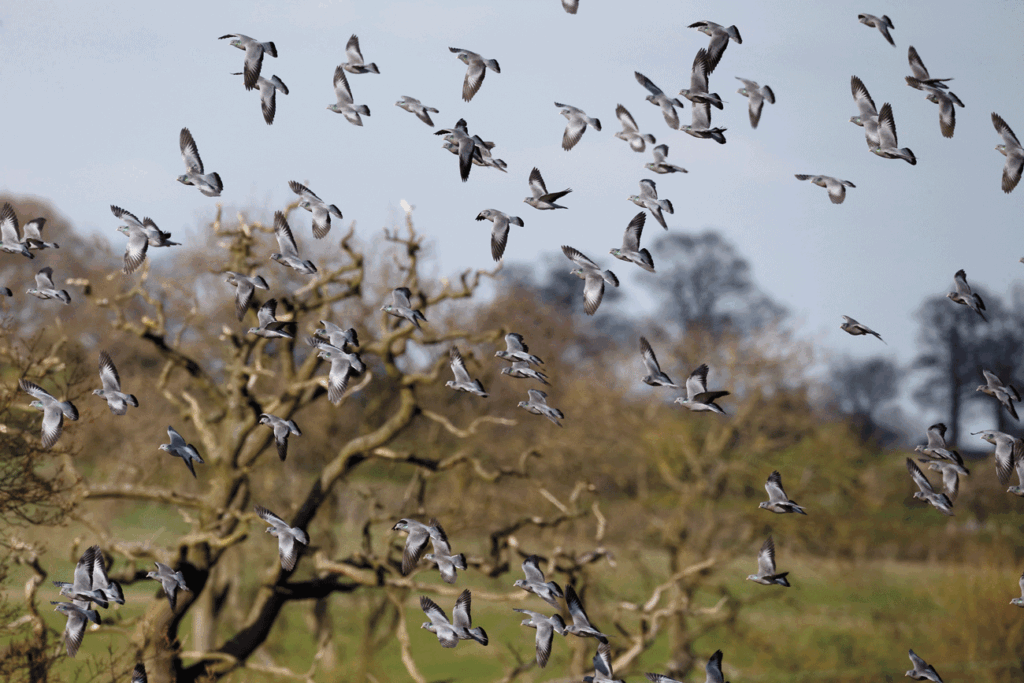
It has a pink breast and on the neck you find the ‘treasure‘ I mentioned earlier – a glistening green metallic patch like an emerald ‘isle’.
Unlike the Wood Pigeon, which can often be seen peering out through the foliage from a flimsy nest, even in the Autumn, the more secretive Stock Dove prefers a hole in a tree and has been known to lay its eggs in a rabbit burrow. What’s up Stock?
Its name is thought to have originated from it nesting sometimes in stumps, or stocks, of trees.
I don’t recall ever seeing a visible nest but the giveaway for its presence deep in the wood is an explosive hooting and apparently greatly satisfied ‘oooh ahh – oooh ahh’.




